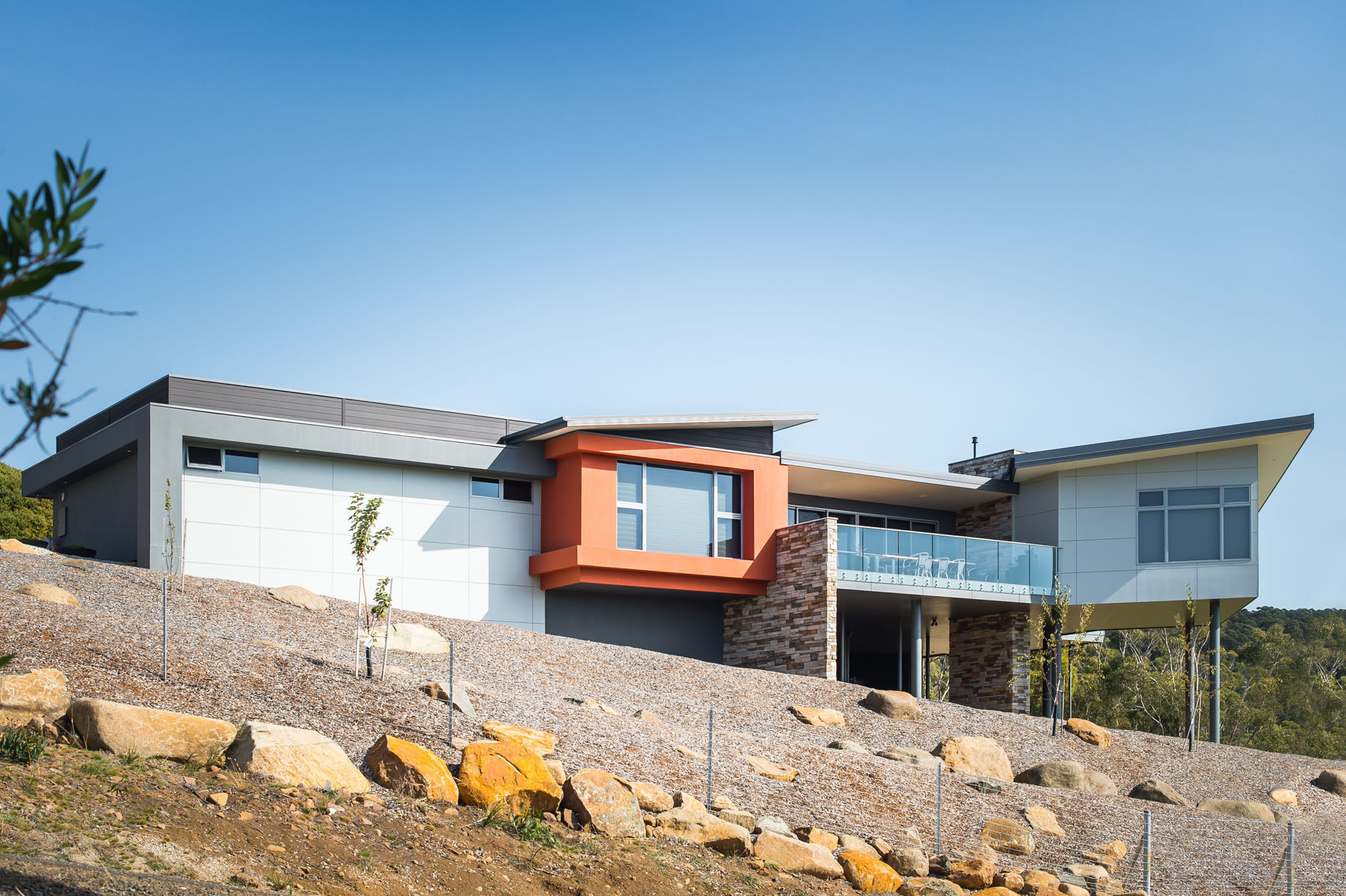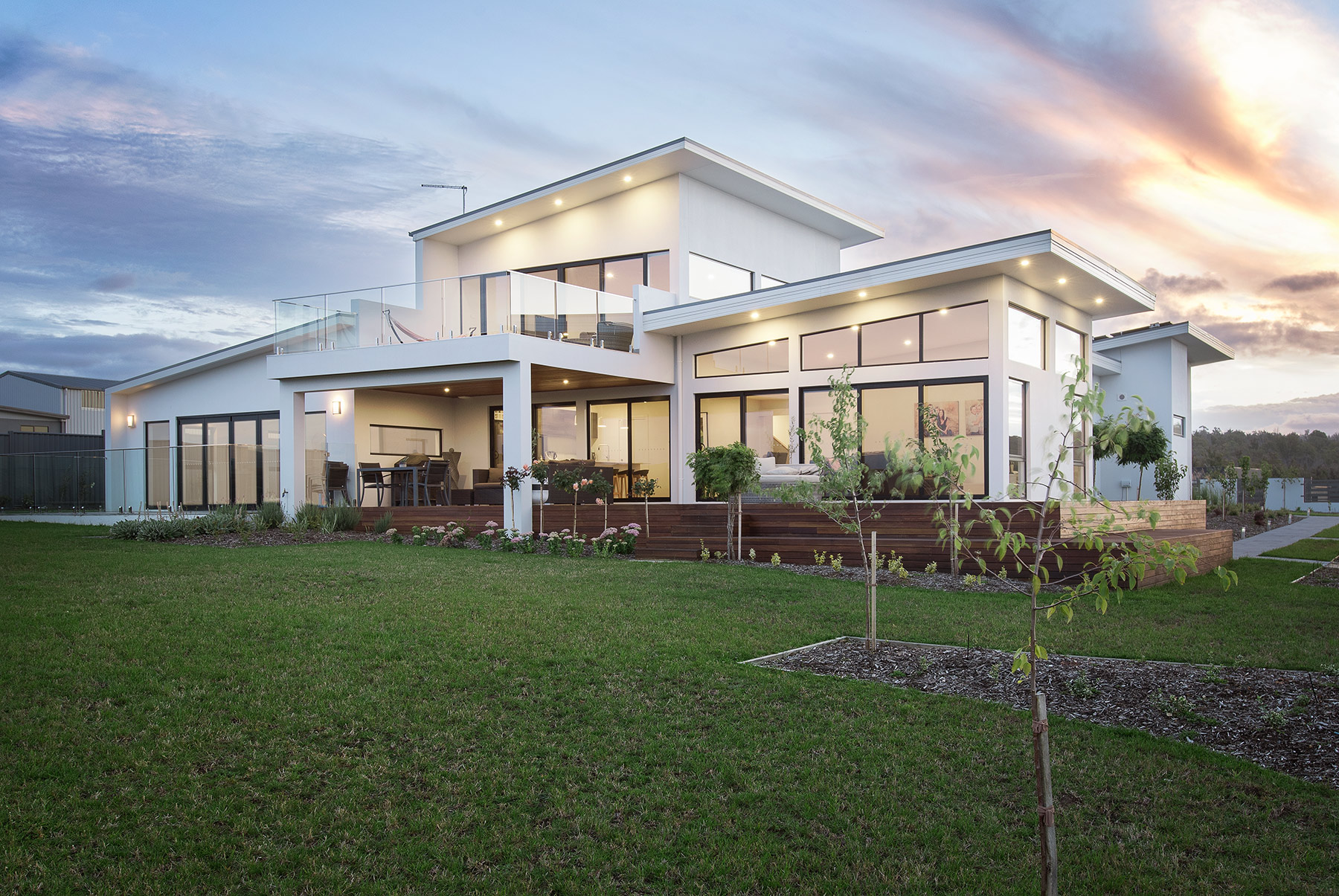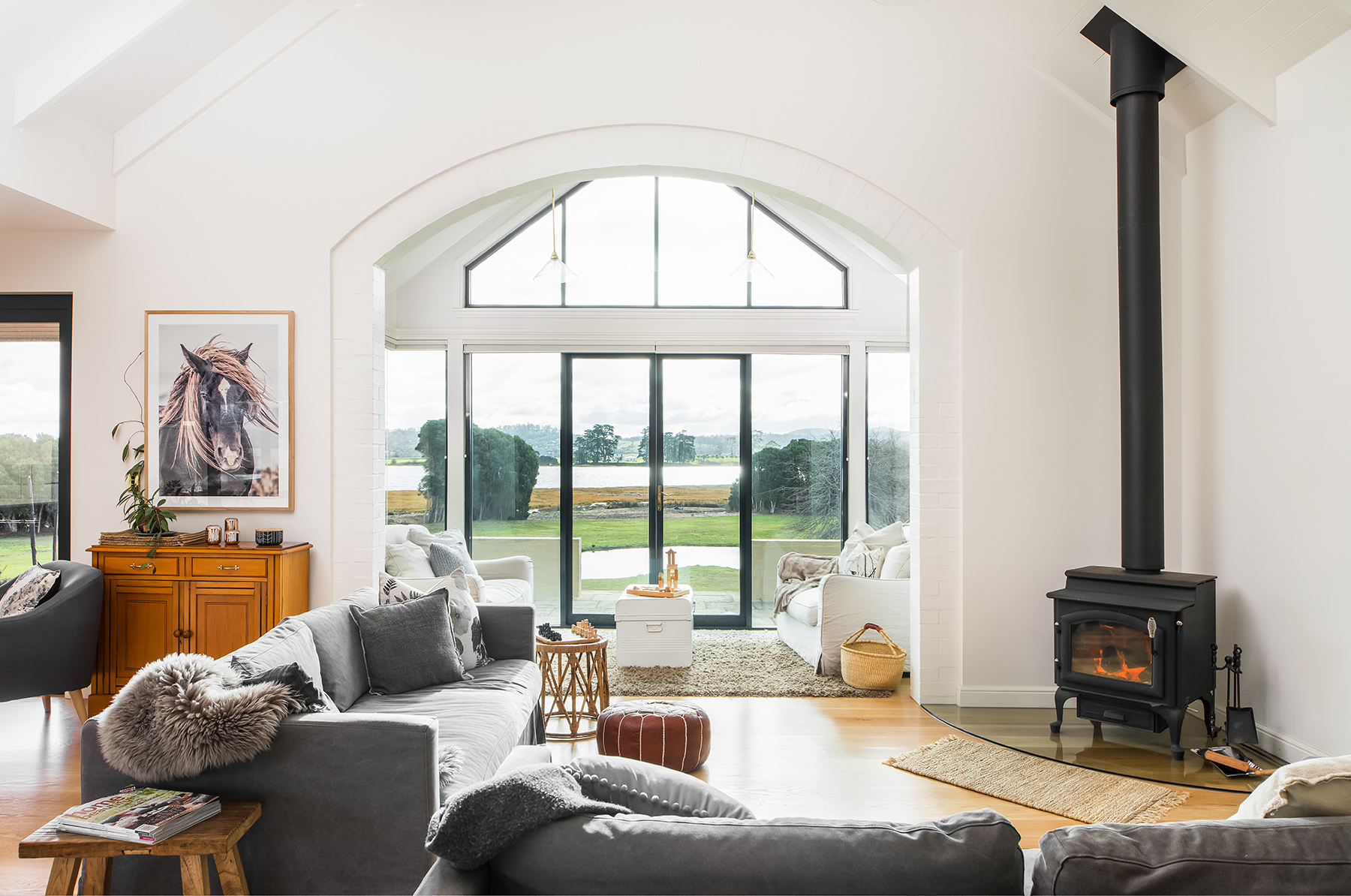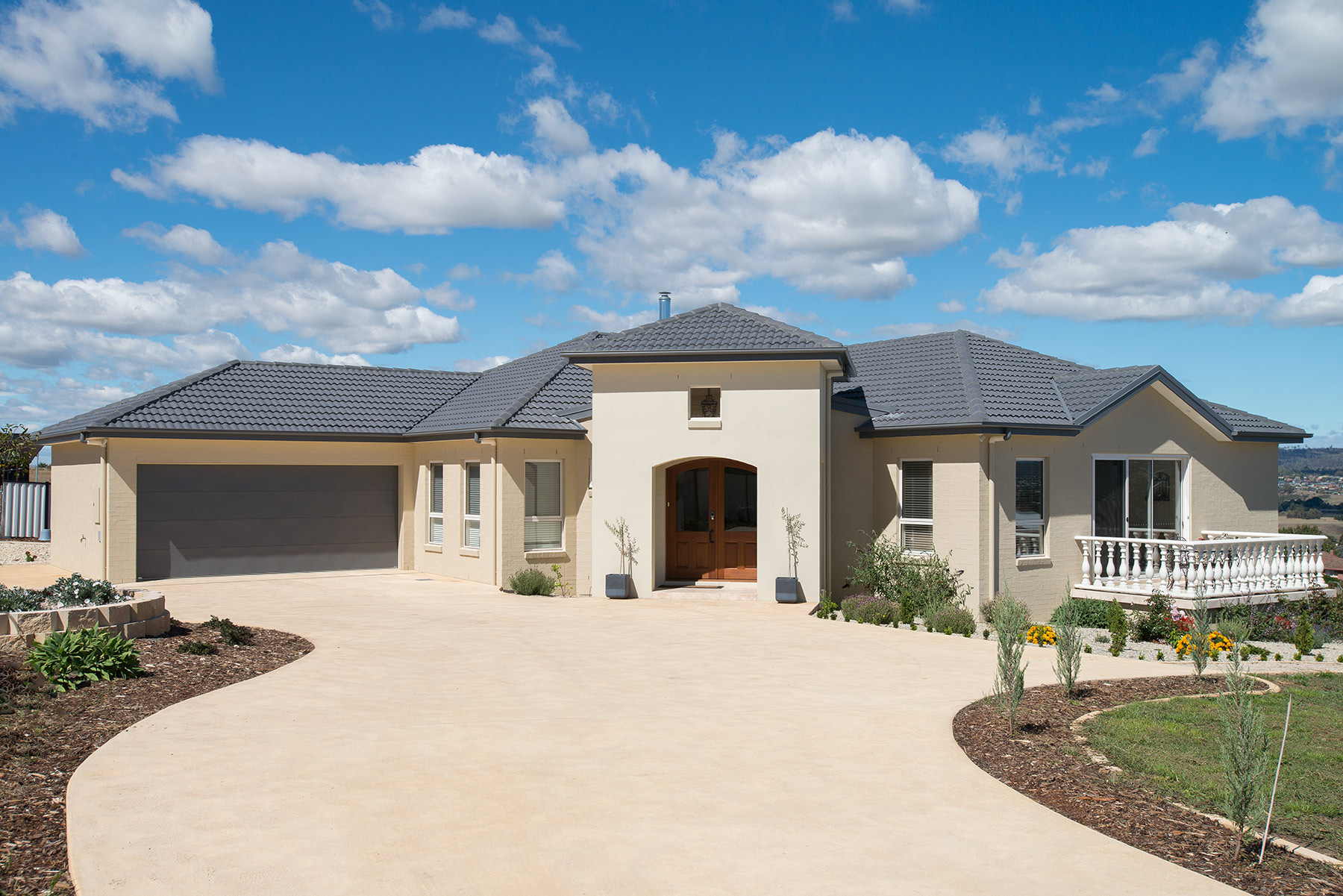
You have finally purchased your block of land and you are ready to begin the design process. Part of this process involves choosing a suitable roof pitch for your design and to understand the benefits and drawbacks associated with the type of roof you choose. We have created 5 roof pitches you might like to consider for your next build or renovation.
The important factors to consider are that there are varying degrees in roof pitch, and there are several factors that determine which roof type is suitable for your new home. Some of these include:
• Pitch (slope)
• Material Type
• Energy Efficiency
• Climate
Skillion Roofs
The first of the 5 roof pitches to consider for your new home is the skillion rook. Skillion roofs are a popular choice in modern home designs. Skillion roofs create a singular angled roof which creates a simple yet modern design. The benefit of a skillion roof is that they provide good water drainage and run off, particularly when they are designed at an ideal pitch between 5-12.5 degrees. Roof pitches on a skillion roof below 5 degrees limits the material types available due to poor drainage. For example, skillions under 5 degrees cannot use standard Colorbond. Materials with a wider profile are required to allow for sufficient drainage. Trimdek and Kliplok are often used for shallow roof pitches and could be an alternative for low pitch skillion roofs.

Design above by Prime Design
Gable Roofs
The second of the 5 roof pitches to consider for your new home is a gabled roof. This is often the type of house we first learn how to draw as children. Gabled roof can be described as a design that features two sloping sides that come together at a ridge, creating a triangular extension at the top. There are several designs associated with gable roofs, some of these include a front gable, a box gable, cross gable and a dutch gable. Gable roofs provide excellent drainage, particularly when designed at an ideal pitch of 30-35 degrees. Subsequently, there is sufficient fall for water runoff and snow when gables are designed at the ideal pitch.

Design above by Prime Design
Hip Roofs
Hip roofs are one of the most common roof pitches with flat eaves as they are cost effective. A hip-style roof will have slopes on every side, which means there are generally three or four equal-length sides that come together at the top to form a ridge. Strong, sturdy, and durable, hip roofs are an excellent option for high wind-rated areas. Hip roofs are particularly popular in coastal regions of Australia, however, work for all types of climates. It is important to note that if you are using tiles for your hip roof 25 degrees is the optimum pitch and 22.5 degrees for a Colourbond (tin) roof.

Design above by Prime Design
Parapet Wall Roofs
Parapet wall roof styles provide a modern look with simple, clean lines. Parapet wall roofs generally consist of a skillion roof or low pitch hip valley roof with a parapet wall to create a unique and modern façade. Construction can be complex and challenging depending on the design, the roof, and fall. As a result, the parapet wall can also create a box gutter to assist with drainage. The main drawback is that this type of roof requires more maintenance than other roofs, largely due to debris gathering on the roof with nowhere to go.

Design above by Prime Design
Butterfly Roofs
The butterfly roof resembles the wingspan of a butterfly and consists of two planes that slope toward each other down to a central point. Butterfly roofs provide a statement however, they are complex and difficult to install leading to increased costs for labour and materials. Butterfly roofs are incredibly aerodynamic meaning that they are more resistant to damaging winds. In contrast, however, they can be susceptible to drainage problems particularly if the central drain area becomes filled with debris.

Additional information
Generally, any roof pitches over 35 degrees require engineered trusses which, will significantly increase the cost of your build. For low roof pitches of 2 degrees only certain roof sheeting products can be used for such a shallow roof pitch, some examples include products such as Trimdek and Kliplok. Climate is also a factor, if you are in an alpine area where It snows you will require a pitch that will allow the snow to drain from the roof but also a roof design that can take the weight of snow. You will also require roof snow guards and a mesh gutter guard. French drains around the perimeter of the building are also often a requirement.
Need help with drafting your new home design or extension and deciding on the right roof pitch for you? Contact us for more information.
